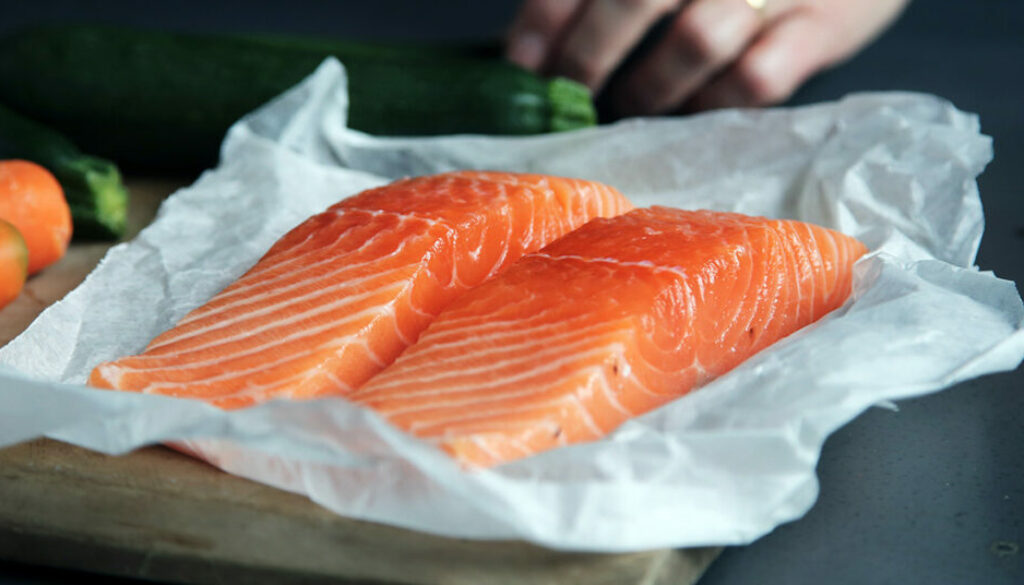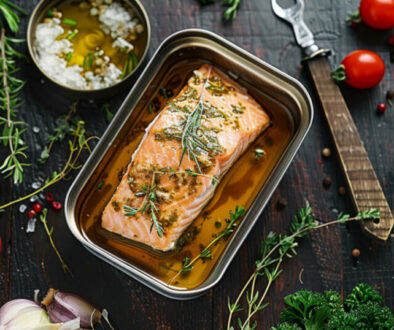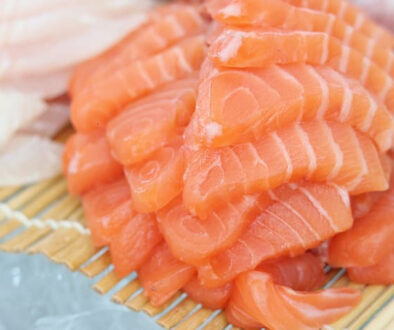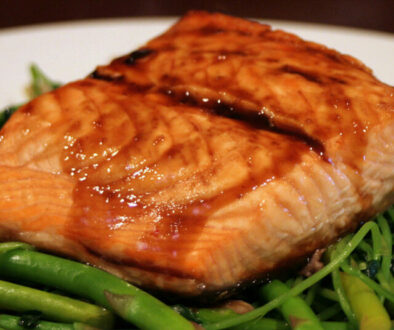7 Shockingly Common Mistakes People Make When Cooking Salmon
Are you tired of making the same salmon cooking mistakes over and over again? Have you ever wondered why your salmon never turns out like the succulent fillets you get at your favorite seafood restaurant? Cooking salmon can be a challenge even for experienced home cooks, and making common mistakes can ruin an otherwise delicious dish.
In this article, we reveal 7 shockingly common mistakes people make when cooking salmon, and provide expert tips to help you avoid them. Whether you’re a seasoned cook or just starting out, our tips will help you cook perfect salmon every time. Say goodbye to dry, tasteless salmon and hello to perfectly cooked, melt-in-your-mouth fillets that will have your taste buds singing!
Choosing low-quality salmon
Choosing low-quality salmon is a common mistake that many people make when buying salmon for cooking. Not all salmon is created equal, and choosing a low-quality fish can negatively impact the taste, texture, and overall quality of your dish.
When selecting salmon for cooking, it’s important to choose a high-quality fish that is fresh and properly raised. Look for salmon that is brightly colored, has a firm texture, and smells fresh. Wild-caught salmon is often considered to be of higher quality than farmed salmon because it is less likely to contain toxins and has a more natural diet. When buying farmed salmon, look for fish that are raised sustainably and have been given a healthy diet.
By choosing high-quality salmon for cooking, you can ensure that your dish is flavorful, healthy, and of the best possible quality. Whether you’re grilling, baking, or pan-searing your salmon, starting with a high-quality fish is the first step towards a delicious and successful meal.
Why Does Your Salmon Smell Fishy?
Washing salmon before cooking
Washing salmon before cooking is a common mistake that many people make when preparing this fish. The belief is that washing the fish can remove bacteria and impurities, and make it safer to eat. However, this is a misconception, and washing the salmon can actually do more harm than good.
When you wash salmon before cooking, you run the risk of spreading harmful bacteria like salmonella or listeria to other surfaces in your kitchen. The water droplets can splash onto countertops, utensils, and other ingredients, potentially contaminating them. Additionally, washing salmon can also remove some of the natural oils and flavors that are essential for a delicious and moist fillet.
To avoid this mistake, it is recommended that you do not wash salmon before cooking. Instead, simply pat the fish dry with a paper towel to remove any excess moisture. This will help to retain the natural oils and flavors in the fish, and reduce the risk of spreading harmful bacteria in your kitchen.
Removing the skin from salmon
Removing the skin from salmon is a mistake that many home cooks make when preparing this delicious fish. While it may seem like a good idea to remove the skin for a cleaner presentation or to avoid a fishy taste, the skin actually serves an important purpose in the cooking process. The skin helps to hold the fish together while it cooks, which prevents it from falling apart and drying out. Additionally, the skin contains healthy omega-3 fatty acids, which are essential for a healthy diet.
To avoid this mistake, it’s important to cook salmon with the skin on. There are several ways to do this, such as grilling or pan-searing the salmon skin-side down until it is crispy and golden brown. If you prefer not to eat the skin, it can be easily removed after cooking with a spatula or knife. However, leaving the skin on during the cooking process helps to ensure that the salmon stays moist and flavorful.
In summary, removing the skin from salmon is a common mistake that can result in dry and tasteless fish. By cooking salmon with the skin on, you can ensure that the fish stays moist and flavorful, while also getting the added health benefits of omega-3 fatty acids. So next time you’re cooking salmon, don’t be afraid to leave the skin on and enjoy all that this delicious fish has to offer!
Being rough when removing bones from salmon
Removing bones from salmon can be a challenging task, especially if you’re not familiar with the process. However, being too rough when removing bones from salmon can lead to the fillet breaking apart, which can make it difficult to cook and affect its texture. To avoid this mistake, it’s important to use the right tools and techniques when removing bones from salmon.
Firstly, it’s important to use a pair of clean and sharp tweezers to remove bones from salmon. This will allow you to gently grasp the bone and remove it without tearing the flesh. Additionally, you should try to remove bones in the same direction as the grain of the flesh, as this will help the flesh hold together better. If you do happen to break the fillet, you can try to piece it back together by gently pressing the two sides of the break together. However, if the fillet is severely broken, it may be better to cook it in smaller pieces or use it in a different recipe altogether.
In summary, being too rough when removing bones from salmon is a common mistake that can lead to a less-than-ideal cooking experience. By using the right tools and techniques, you can avoid this mistake and keep your salmon fillets intact and delicious.
Not adding enough seasoning to salmon
Salmon is a flavorful fish with a unique taste that can be enhanced with the right seasoning. However, many people make the mistake of not adding enough seasoning to their salmon, resulting in a bland and unappetizing dish. Seasoning is crucial for bringing out the natural flavors of the fish and adding depth and complexity to the dish.
When seasoning salmon, it’s important to strike a balance between adding enough flavor without overpowering the delicate taste of the fish. Some popular seasoning options for salmon include lemon, garlic, dill, paprika, and black pepper.
To avoid the mistake of not adding enough seasoning to salmon, try experimenting with different herbs and spices to find the perfect combination for your taste buds. Don’t be afraid to get creative and try new flavor combinations. With a little experimentation and the right seasoning, you can elevate your salmon dish from ordinary to extraordinary.
The Best Seasonings For Salmon
Overcooking salmon
One of the most common mistakes people make when cooking salmon is overcooking it. Overcooked salmon can become dry, tough, and flavorless, making it far less enjoyable to eat. This mistake often happens because people are afraid of undercooking the salmon and not realizing that salmon continues to cook even after it has been removed from the heat.
To avoid overcooking your salmon, it’s important to keep an eye on the cooking time and temperature. Salmon should be cooked until it is just opaque and flakes easily with a fork, which usually takes about 10-12 minutes for a 1-inch thick fillet. Using a meat thermometer can also help you ensure that the internal temperature of the salmon reaches at least 145°F. By being mindful of the cooking time and temperature, you can avoid overcooking your salmon and achieve perfectly cooked fillets that are moist, tender, and flavorful.
Tips On Cooking Salmon To The Perfect Temperature
Using the same pan for cooking sides and salmon
One of the most common mistakes people make when cooking salmon is using the same pan for cooking sides and salmon. While it may seem like a convenient shortcut, cooking everything in one pan can have negative effects on the quality and taste of your salmon. When you cook sides like vegetables or potatoes in the same pan as your salmon, the flavors can mix together and create an unappetizing taste. Additionally, the juices from the sides can seep into the salmon and make it soggy or overcooked.
To avoid this mistake, it’s important to use separate pans when cooking sides and salmon. This allows you to control the temperature and cooking time of each dish individually, and ensures that the flavors don’t mix together. You can also use this opportunity to add different flavors and seasonings to each dish, which can enhance the overall meal experience. By using separate pans, you can ensure that your salmon is cooked perfectly and that all of the sides complement it well.
The Best Pans For Cooking Salmon On A Stove Top
Final thoughts on cooking the perfect salmon
In conclusion, cooking salmon can be a challenge, but by avoiding these seven common mistakes, you can achieve perfectly cooked, melt-in-your-mouth fillets that will have your taste buds singing. Choosing high-quality salmon, avoiding washing the fish before cooking, leaving the skin on during cooking, being gentle when removing bones, adding enough seasoning, and avoiding overcooking and using the same pan for cooking sides and salmon are all essential tips that will help you cook delicious salmon dishes at home.
By following these tips, you can elevate your salmon game from ordinary to extraordinary, impressing your guests and delighting your taste buds with succulent, flavorful fillets. So next time you’re cooking salmon, keep these tips in mind, and don’t be afraid to experiment with different flavors and techniques to find the perfect combination for your taste buds. With a little practice and the right approach, you can become a salmon-cooking master in no time.



